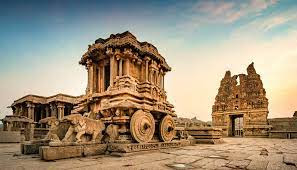The Tungabhadra Dam, also known as Pampa Sagar, is a water reservoir constructed across the Tungabhadra River in the city of Hosapete in Vijayanagar district karnataka. It is a multipurpose dam serving irrigation, electricity generation, flood control, etc. for the state. It is one of the only two non-cement dams in India, the other being the Mullaperiyar Dam in kerala. The dam is built of surki mortar, a combination of mud and limestone, commonly used at the time of its construction.
In 1860, Sir arthur cotton of Madras Presidency originally conceived the Tungabhadra project. His proposals were further modified and developed subsequently, evolving it into a joint scheme with the Kingdom of Hyderabad. N. Paramseswaran Pillai accordingly revised the scheme in 1933. In 1940, Madras ordered a detailed investigation of the scheme. Based on the agreements made, an examination of a number of alternatives was conducted by L. venkata krishna iyer, the then Superintending Engineer, Bellary, and F. M. Dowley, Chief Engineer, both from the kingdom. In 1942, further detailed investigations of the project were done by M. S. Thirumale Iyengar from the presidency. The report he thus submitted was accepted by the Government of Madras with certain modifications fixing the sill level at RL 1550 ft. The June 1944 agreement between Madras and Hyderabad enabled the two governments to finally begin the construction of the Tungabhadra project.



.jpg)

No comments:
Post a Comment